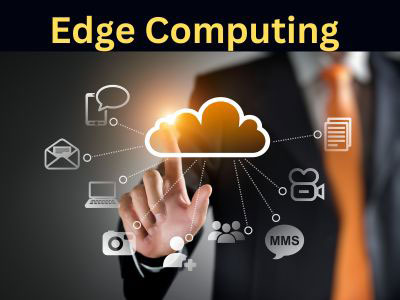Key Takeaway
A common issue facing edge computing is security. With distributed devices, ensuring consistent protection against cyber threats is challenging.
Other concerns include managing device updates, hardware limitations, and the complexity of maintaining a large number of edge nodes.
Security Risks and Vulnerabilities in Edge Devices
As edge computing becomes more prevalent, security risks and vulnerabilities associated with edge devices need to be addressed. While edge computing offers many benefits, such as reduced latency and improved real-time processing, it also introduces new challenges, particularly in terms of data security and device integrity. Edge devices are often deployed in remote or distributed locations, which makes them more vulnerable to physical tampering, unauthorized access, or cyberattacks.
The decentralized nature of edge computing networks means that devices may not have the same level of protection as centralized cloud servers, making them potential entry points for hackers. Moreover, the proliferation of IoT devices, many of which have limited processing power and memory, increases the surface area for potential attacks. To mitigate these risks, organizations need to implement strong security measures, including encryption, secure authentication, and regular software updates. Additionally, edge devices should be designed with security in mind, incorporating features like secure boot and hardware-based security elements to prevent tampering. By addressing security vulnerabilities in edge devices, businesses can fully harness the potential of edge computing while protecting their systems from threats.

Limited Processing Power and Scalability Challenges
One of the most significant hurdles in edge computing is managing the balance between processing power and scalability. Unlike cloud data centers, edge devices often have limited computational resources and energy efficiency constraints. This can make it challenging to perform complex data analysis or AI processing locally.
Scaling an edge computing infrastructure further complicates things. With thousands of edge devices deployed across locations, maintaining consistent performance and updating devices remotely become daunting tasks. Each device must operate seamlessly within a distributed system while processing real-time data.
To overcome these limitations, lightweight AI models like TensorFlow Lite and optimized edge hardware, such as NVIDIA Jetson or Intel Movidius, are used. These technologies ensure that critical processes occur at the edge without overwhelming the hardware. Engineers must also adopt strategies like horizontal scaling, where more devices are added to handle growing workloads, rather than overloading existing systems.
For new engineers, it’s crucial to understand these challenges and focus on building systems that strike the right balance between performance and scalability. The future of edge computing depends on innovative solutions to these bottlenecks.
High Deployment and Maintenance Costs
Despite the many advantages of edge computing in IoT systems, the deployment and maintenance costs can be significant. Setting up edge devices requires specialized hardware, software, and infrastructure. Additionally, maintaining these devices can be complex, especially when scaling an IoT network to handle thousands of devices.
The initial costs may also include training staff, deploying devices across multiple locations, and ensuring that edge devices are well-maintained and secure. This financial burden may deter small businesses from adopting edge solutions, making it important to weigh the long-term benefits of reduced latency and bandwidth usage against the initial investment.
Interoperability Issues with Existing Infrastructure
Interoperability is a major challenge when integrating edge computing with existing IoT infrastructure. Most IoT systems are built on legacy systems that use outdated communication protocols or proprietary technologies, making it difficult to integrate new edge devices seamlessly. This lack of standardization creates integration challenges and prevents the smooth exchange of data across devices from different manufacturers.
The challenge of interoperability becomes even more pronounced in large-scale IoT deployments, such as smart cities or industrial settings, where devices from different vendors must communicate effectively to ensure operational efficiency. Edge devices must be able to work with a variety of communication protocols, including Wi-Fi, Bluetooth, Zigbee, and 5G, while maintaining data consistency and security.
To address these challenges, industry standards and open-source platforms are essential. By adhering to common communication protocols and integrating with existing middleware solutions, edge devices can bridge the gap between old and new systems, facilitating smoother integration.
Interoperability ensures that edge computing can be effectively utilized across various IoT applications, enabling greater flexibility and scalability in IoT system deployments.
Managing Energy Efficiency in Edge Deployments
As edge computing continues to grow, energy efficiency will become a critical focus. Edge devices often operate in remote or hard-to-reach areas, making it crucial to design them to consume as little power as possible while still performing demanding tasks. Manufacturers will increasingly look to low-power hardware and energy-efficient software to ensure the sustainability of edge systems.
Energy management will also involve optimizing power consumption based on demand. Edge devices can intelligently manage their power usage by turning off or reducing energy consumption when processing power is not required, extending battery life and reducing operational costs.
Additionally, integrating edge devices with energy-efficient infrastructure, such as renewable energy sources (solar or wind), can further enhance the sustainability of edge computing deployments, particularly in remote or industrial environments where access to the power grid may be limited.
Conclusion
In conclusion, a common issue facing edge computing is its limited computational resources, which can affect the ability to process large amounts of data at the edge. As edge devices are often resource-constrained compared to centralized cloud systems, it becomes challenging to support complex data processing tasks.
However, advancements in edge hardware and the integration of AI and machine learning models are helping mitigate this issue. With the continuous development of more powerful edge devices, it is expected that these limitations will diminish, allowing for more efficient edge computing solutions in the future.
